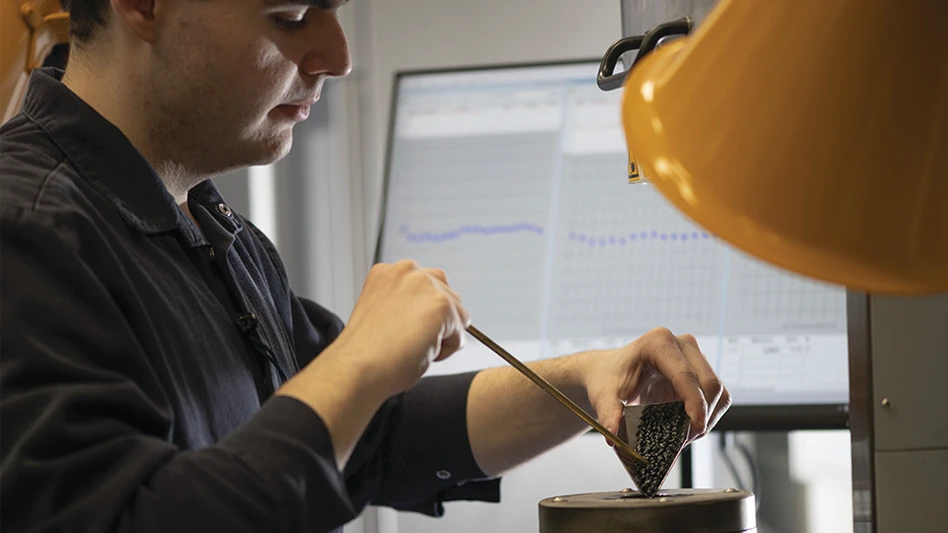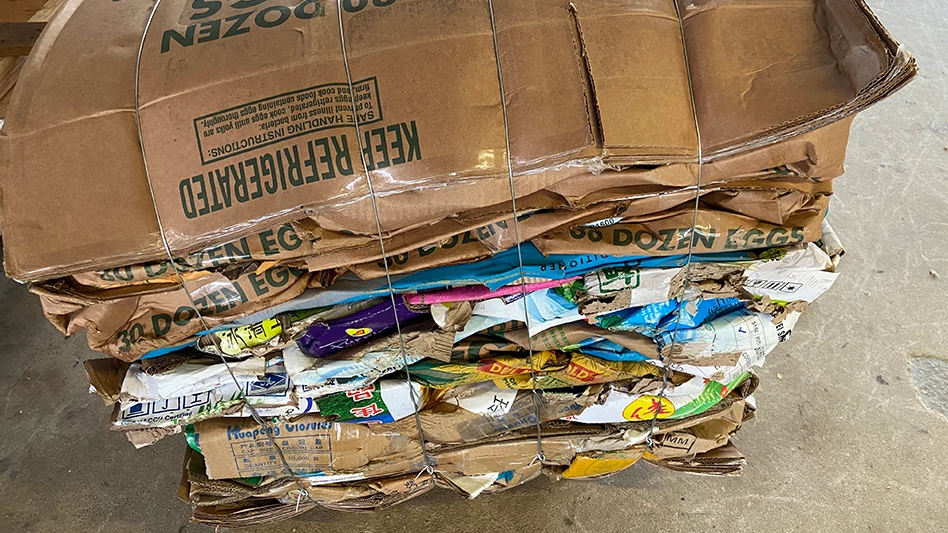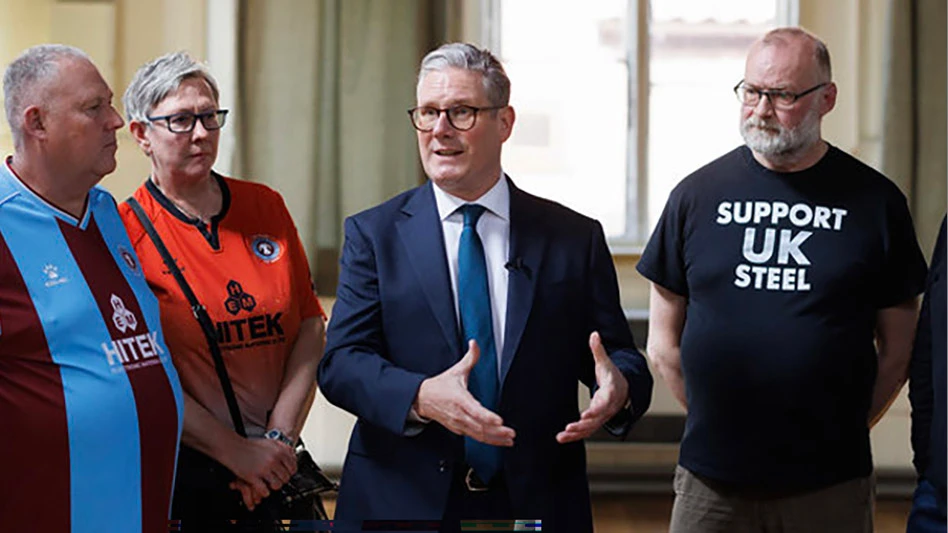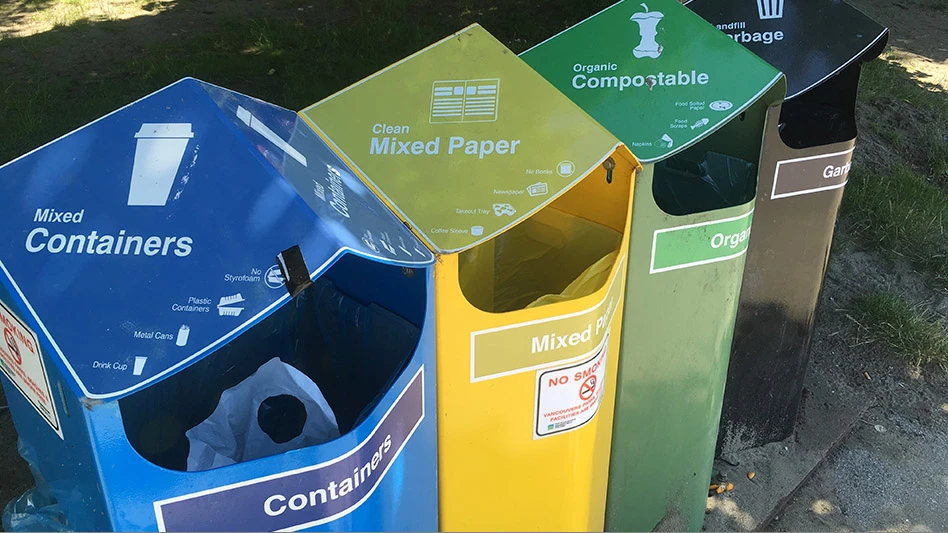Processing facilities (or packing plants), paper stock operations and MRFs play a vital role in the supply of fiber to the country’s paper and paperboard industry. However, because of economic difficulties associated with operating such facilities, they have not received the same attention as other aspects of paper recycling.
Traditionally, the approach to paper stock plants was to keep them simple—have the lowest possible capital investment and handle highly source-separated materials. Getting the materials baled and out the door is always top priority. As technology moves forward with higher recovery rates, paper recycling processing facilities are being asked to handle more mixed incoming fiber and other material streams. As processing facilities’ size and complexity grow, more attention to their design, construction and efficient operation is needed.
There are often complaints about the economics of recycling systems, especially where processing operations are concerned. Volatile recovered paper market prices, at times, make it almost impossible to have viable sophisticated processing facilities (although those that complain about market prices of the last two years would be well advised to examine the ultra-low prices of the early 1990s). Complaining does not do anyone any good. What one must do is gain control of that over which one has obtainable control.
The things that can be controlled include collection and processing costs. One should begin by benchmarking the current operations. Then, analyze, make changes, measure results and set new benchmarks. Keep this process going so things continue to advance and change.
There is a strong industry trend toward reducing collection costs, using new techniques that result in less trucks and routes. To accomplish this, experts are fully realizing the benefits of full-cost accounting for the services of recycling. From the generator to the mill’s dock, it is clear that the careful integration and optimization of costs will yield the most profitable operations.
With the advent of residential curbside recycling in the late 1980s, a number of processing facilities were equipped to handle paper, bottles and cans (glass, metal and plastic). The latest evolution in MRFs is the trend towards single-stream processing-mixing the fiber and bottle or can stream, at the source.
Single-stream recycling is dependent on technology to separate the incoming materials into marketable products. Two types of equipment are integral to these processing operations; disc screens and incline sorting machines.
Specially designed disc screens operating with proprietary shaped discs separate paper from containers with over 90% efficiency. Screen capacities are up to ten tons per hour at these efficiency levels. Higher levels can be reached when a second screen is used in series in a clean-up or polishing mode.
Inclined sorting machines are specially designed slanted conveyors with proprietary belt beaters that are able to sort paper from containers, and with more than 90% efficiency. These machines have individual capacities of up to eight tons per hour at these efficiency levels. Higher efficiency levels can be obtained when the incoming stream is split and two parallel incline-sorting machines are used.
One thing that appears to be missing with many processing facilities operating throughout the United States is viewing them as manufacturing facilities. They are no different than any other operation that takes in a raw material (even given recyclable variability) and performs value added functions to produce a finished product/commodity. Baled paper is, indeed, a "finished product" and the virgin paper mill is a great analogy. (Those who don’t consider trees variable in their composition should consider that rocks, dirt, bark, and knots must be removed before the incredibly complex pulping and bleaching operation. This produces a finished product that looks nothing like the incoming raw material.)
The following factors have evolved in manufacturing over the last fifty years and are applicable to recycling processing operations:
-Economy of scale is vitally important to the cost of processing. As time goes on, large processing facilities, handling material from larger areas, will evolve with lower per-ton costs.
-Technological advances in the processing equipment have just begun. Hand-picking materials is the equivalent of digging ditches without bulldozers.
-Quality Counts. Every step of the recycling equation, from material preparation to final baling, must factor in quality.
Opening the Screen Door
Screening, sizing and classifying processes can be used to automatically sort mixed grades of paper into individual commodities. By taking full advantage of the dimensional differences of various grades, screening (or size separation) is an effective technological development. The types of screens available for these activities are disc, vibrating and trommel screens.
-Disc Screens
Disc screens have long been used in the pulp and paper industries to separate lumps of frozen chips and oversized tree limbs from wood chips. Since the mid-1970s disc screens have been widely used in processing solid waste.
The disc screen consists of multiple horizontal shafts that are parallel to each other and oriented perpendicular to the direction of material flow. The shafts have a staggered arrangement of discs that form openings for undersized material to fall through. Gaps exist between the discs on adjacent shafts, as well as between the discs. The shafts all route in the same direction, agitating material and moving it along the screen. The materials to be separated fall between the spaces and oversized materials are carried over the top of the discs as if on a conveyor belt.
Disc screens have several advantages, including self-cleaning action and the capability to be adjusted by varying the spacing of the discs on the shafts. Additionally, they use less space than other types of screens, require the least amount of steel per screening area and are relatively low in cost.
In summary, the disc screen is ideally suited for automatically sorting paper. It works especially well in removing fines, grit and other small contaminants from a predominantly OCC stream. However, there are limitations to the disc screen’s inability to sufficiently agitate the material to liberate (or shake out) the contaminants from the desired paper.
-Vibrating Screens
Vibrating screens are used for hundreds of applications in numerous industries. The range of the vibratory motion moves the material across the screen and helps dislodge undersized materials that fall through the screen deck openings. This type of screen is typically equipped with flat decks that are often declined to facilitate material movement along the surface. The deck(s) are secured to a steel frame driven by special mechanisms capable of inducing a side-to-side, linear or vertical vibrating motion. A linear or reciprocating motion tends to move the material upward and in a direction of material flow. A side-to-side or oscillating motion (sometimes called a "sifting motion") tends to gyrate the material down the deck surface, while the material never leaves the deck surface. The vertical motion throws the material upwards, which allows it to contact decks at different locations.
The advantages of vibrating screens are the ability to efficiently separate materials into several sizes while not causing so much agitation that the material is "fluffed up"- meaning, the bulk density is significantly reduced. The disadvantages are similar to the disc screen, since some blinding does occur (though less with the vibrating screen). Another disadvantage is the screen’s relatively high cost, due to the large mass of steel needed to serve as a counterweight in the vibratory motion and to the significant foundations needed to support the dynamic loads.
-Trommel Screens
Trommels (or rotating-drum screens) were developed by the mining industry. Today, they are widely used in the solid-waste and recycling industry. Materials are fed into the upper end of a large-diameter drum that rotates on a horizontal axis. The rotation of the trommel agitates the material, giving undersized particles several chances to go through the holes. The tilt, or declination, of the trommel (usually two to five degrees) helps the material move through the trommel from the upper feed end to the lower discharge end. Depending on the rotational speed of the trommel (measured in revolutions per minute), the material may slide or roll over itself (kiln action), or it may be lifted and then fall (dropping action). Trommel diameters are usually in the range of four to 12 feet.
Going Forward
There are a myriad of other areas where minor technological advances must take place. One example is bar coding finished materials for easy identification, both at the processing facility and at the end user mill.
Single-stream processing for residential recycling has been met with a significant level of controversy. The earliest residential recycling programs featured highly source-separated collection (with as many as eight separate bins on the collection vehicles) and minimal value added at the processing facility other than densification. These programs, still appropriate only in small communities, had very high collection costs and, typically, could not be economically justified. The next evolution, first seen in the western United States, was the three-bin system with old newspapers in one, glass in another and aluminum and steel cans in a third. This approach caused the birth of the MRF with some fairly simple true processing operations necessary to produce the commodities.
The next step, which began in the eastern United States, was to mix the bottles and cans together and add plastics.
Another step, single-stream collection and processing, has begun in the western United States. After ten years of developing technologies to process and manage co-mingled containers, technology is now forging ahead with advanced processes to reduce residential curbside recycling program cost. There is convincing data that for many programs, the combined collection of paper with containers in single-stream will save the collector big money. With single-stream recycling, we can consolidate truck collections as well as automate them to substantially reduce costs. Studies performed by RRT have confirmed that single-stream collection programs will increase collection productivity well over 20%. It simply takes less time per stop.
This approach is not without challenges. Undertaking a single-stream program requires substantial planning as well as an understanding of all impact issues. The most significant issues are economic. A complete revamping of the infrastructure is needed. Collection costs will go down, but some of the savings will be offset by increased costs for processing at the MRF. Diversion rates will go up, but some of the savings will be offset by the higher residue rates. These issues and others have brought some concern and hesitance. The bottom line is that the winners in this game are those that will quickly go through the planning and re-engineering process and get going towards the path of single-stream recycling.
Nat Egosi is president of RRT Design and Construction, a processing facility, design, construction and operation firm. He can be reached at (516) 756-1060, (516) 756-1064 (fax) or rrtenviiro@earthlink.net. Bill Moore is president of Moore &Associates, a paper recycling firm, can be reached at (770) 518-1890, (770) 518-2779 (fax) or MARecycle@aol.com.

Explore the October 1998 Issue
Check out more from this issue and find your next story to read.
Latest from Recycling Today
- Acerinox names new North American Stainless CEO
- Greenwave closes 2024 books with red ink
- Steel Dynamics nets $217 million on record shipments
- Massive Chinese steelmaking rebound recorded in March
- LME looks into sustainable metal pricing
- OnePlanet Solar Recycling closes $7M seed financing round
- AMCS launches AMCS Platform Spring 2025 update
- Cyclic Materials to build rare earth recycling facility in Mesa, Arizona





